Norway: A Travel Guide
Spectacular landscapes are just the beginning as you begin to explore this fascinating country.

Whether you are experiencing Oslo in its shimmering summer, or the winter wonderland of the country’s north — Norway offers something for everyone.
Here's a quick overview of some of the many reasons that make Norway a destination that should be near the top of your travel wish-list:
Oslo
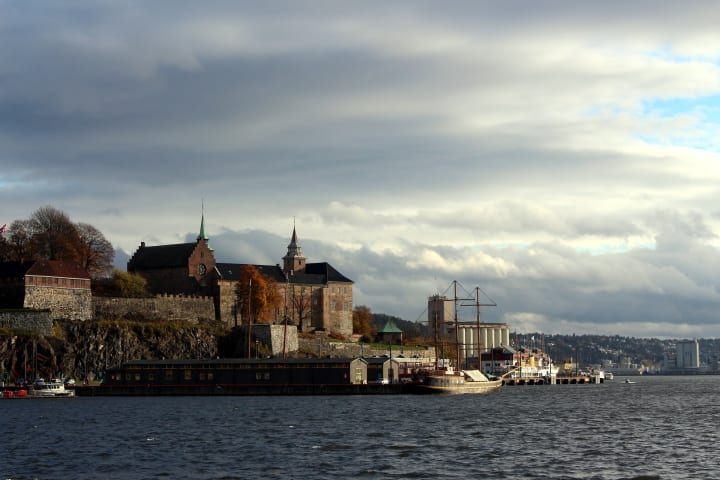
Oslo, Norway. Image: Pixabay
My guide to the city of Oslo was Inger-Johanne Bryde. After having worked as a stewardess for Pan-Am airways for 16 years, Inger-Johanne is a woman of the world, with a dry sense of humour:
"I don’t run after buses or men!" she declared as we embarked on our expedition.
Generally translated as "field of the gods," Oslo is one of the oldest Nordic capitals. This is a city that seems to be very sure of its purpose, confident in its place in the world. Resource-rich, the Norwegian economy continues to grow strongly and, as well as investing in the infrastructure of the country, they are building iconic buildings in Oslo and buying assets around the world.
First stop was the stunning Opera House, a gleaming modern temple of Italian marble and a dramatic oak interior.
Then we jumped on a tram and headed up to the Vigeland Sculpture Park — an extraordinary showcase of the work of eccentric sculptor Gustav Vigeland, over 200 sculptures in bronze, granite, and iron, exploring the themes of love, family, and life.
From the park we took a bus out to the Viking Ship Museum which houses three Viking ships that have been found in burial mounds along the Oslo fjord.
- Buried as vessels for their owners’ final journey to the realm of the dead, the ships and the artefacts they contained provide a fascinating glimpse into Viking society and culture.
- I’m a bit obsessed with Vikings. It’s a time and a people that I’ve always been fascinated with — lots of bearded men, running around, killing each other, and violently raiding England.
- It was a bit surreal to visit the Viking Ship Museum and stand within touching distance of actual Viking ships, dating from around 900AD.
- As well as the virtually intact ships, the museum’s collection includes around 1.5 million artefacts that continue to inform research into this important period of history — helping us understand the lives of the Viking peoples, the farmers, the traders, and warriors.
- The Scandinavian countries are justifiably proud of their Viking history — it was a period of time (c790AD-c1070AD) when the people from this part of the world explored, conquered, and governed key parts of the known world at that time.
We grabbed a coffee from Hemma Hos restaurant and then boarded a ferry back across the fjord where we completed our tour at the Aker Brygge marina precinct and a quick wander through the Museum of Modern Art.
Edvard Munch
- Marking the 150th anniversary of Edvard Munch’s birth, “Munch 150” is a joint exhibition presented in Oslo by the Munch Museum and the National Gallery.
- The National Gallery is showing his works from 1882–1903, while the Munch Museum presents works from the period 1904–1944.
- Munch is widely recognised as a pioneer in modern European art and one of the most important artists to have emerged from Norway.
- Having grown up in Oslo, he spent long periods in Paris and Berlin.
- Munch is noted for his evocative treatment of psychological and emotive themes such as angst, love, jealousy, and death.
- My favourite pieces were from the Bathers series, but also great to see his iconic work The Scream.
Keeping Fit
- I went for a swim at Tøyenbadet pool (across the road from the Munch Museum) — a beautiful modern pool, clearly popular with local schoolchildren. Also has a good sauna.
Where to eat and drink
- Cafe Christiania – simple food done well, with a cluttered interior design.
- Onda restaurant in the Aker Brygge marina precinct – the perfect place for soaking up the sun while enjoying some seafood and a beer.
- Lofoten — one of the best seafood restaurants in Oslo.
- Tim Wendelboe in the Grunerlokka neighbourhood – they take their coffee very seriously.
- Fuglen — a cool, coffee-loving cafe.
- Stockfleth’s — a cafe chain with a number of outlets in Oslo, very good.
- Brighton Pub – an established gay venue.
- London Pub – probably Oslo's most famous gay bar.
- Mathallen — a modern food market in the old industrial neighbourhood of Vulkan.
Where to stay
- Thon Hotel, Oslo: There are 15 different Thon hotels in Oslo, I stayed at the Panorama — an easy five minute walk from the central station, modern and functional, with really solid wifi. Definitely recommended.
Tromsø

Tromsø, Norway. Image: Pixabay
Tromsø is known as the capital of the Arctic — surrounded by spectacular fjords and mountains. Throughout the decades this has been the gateway for expeditions into the Arctic regions.
Built on the trapping and fishing industries, Tromsø has traditionally been a wealthy city — often described as ‘the Paris of the north’. Compact and charming, with plenty of examples of the traditional Nordic architecture that characterises this region.
It had been a day of travelling so, after checking into our hotel, first stop was dinner at Fiskekompaniet — a smart, modern restaurant right on the harbour of the city, specialising in local seafood.
After dinner we hit Circa bar for a few drinks. Tromsø is a university town, and Circa was clearly a student favourite. The DJ was mainly playing Danish hip hop. It was an upbeat atmosphere and it turned into the kind of night where we stayed up too late, drank too much, and had a really good time.
The next morning we were booked in for a dog-sledding expedition. If you ever need a hangover cure, then dog-sledding through the Arctic snow is about as good as it gets — the perfect way to clear your head and shake out the cobwebs.
There are a number of dog-sledding experiences available in the area, we went with Tromsø Villmarkssenter and they were excellent. After a short bus ride out to the kennels, we were soon being instructed on how to guide our enthusiastic teams of huskies through the snow.
Initially I felt a little guilty about being responsible for the dogs having to drag the sled through the deep snow, but any time we paused momentarily they were clearly anxious and excited to get on the move again. They love to run, seamlessly working as a team.
There was also a litter of husky puppies at the kennels. Super-cute, it was difficult to resist taking one home.
That afternoon we called into Tromsø Outdoor to hire some more serious outdoor gear and embarked on a quick snow-shoe expedition through the forest on Tromsø island. We had a guide with us which was really helpful. The great thing about snow-shoeing is that anyone can do it, you don’t have to be super fit or athletic, and it’s something that children of all ages can also do. Trudging happily through the deep, powdery snow of Tromsø, it was easy to appreciate why the Norwegians love their outdoor lifestyle.
I wouldn’t be surprised if one day the people of Tromsø erect a statue to the Ab Fab actress Joanna Lumley. A few years ago, she filmed a documentary where she came to Tromsø to see the Northern Lights. Everyone we spoke to credited her with putting Tromsø on the map (especially with visitors from the UK) as the premier Northern Lights destination.
We were there towards the end of the optimum viewing season, and it had been a particularly cloudy week, so we knew that the odds were against us but we were hopeful of catching a glimpse of the phenomenon that draws so many people from around the world.
You can simply hire a car and drive out into the mountains to scan the night sky, but we opted for Tromsø Safari as they drive you out to a hut on the edge of a fjord and keep you fuelled up on coffee and snacks while waiting expectantly for the lights to appear.
Their success rate is about 85% which is fairly high considering that the Northern Lights are a bit of a law onto themselves. Unfortunately the lights didn’t make an appearance for us, but it gives me a great excuse to visit northern Norway again.
Without doubt, Tromsø is the perfect place to begin your Arctic adventure.
Where to eat
- Fiskekompaniet: With its picturesque harbor views, Fiskekompaniet is exactly the kind of restaurant that you would hope to find a city renowned for its seafood. Modern and stylish, serving up the best seafood with a creative flair that makes the most of the freshness, flavour, and texture of its produce. We started with fish roe served with creme fraiche and brioche; main course was a fillet of halibut served with a black ink crust, pearl barley risotto, and a bisque foam; finishing with a dessert of blackcurrant chocolate ganache. Exciting and delicious food in a spectacular part of the world.
- Biffhuset restaurant: Biffhuset is a primarily a steak restaurant. A solid, dependable choice for quality food from quality local produce. With its rich, warm, wooden interior, this is a welcoming place where it is best to come equipped with a decent appetite. We started with garlic shrimps which were spectacular. I had a fillet of cod for my main course, which was very good; although I had food-envy of people who had ordered the reindeer, which was probably the winner. A great restaurant in a great part of the world.
- Egon restaurant: Egon is a mid-price restaurant chain in Norway and their Tromso branch was in the right place at the right time for our group of hungry travelers. The decor is kitted out with artifacts from Norway’s hunting and fishing past, the mounted head of a musk ox loomed over our table. To be honest I wasn’t expecting much, but the food was surprisingly good. We all went for steaks — perfectly cooked and accompanied by crispy discs of fried potato and a very good bearnaise sauce. A satisfying lunch from a dependable brand.
Where to stay
- Thon Hotel, Tromso: The Thon chain of hotels is a reliable brand of inexpensive hotels and their Tromso property does not disappoint. Perfectly located within walking distance of all the key attractions, the Thon Hotel is modern and stylish while keeping everything simple and compact. The rooms are typically Nordic, not huge but comfortably fitted out. The wifi is easy to use, which always ensures bonus points. One of the highlights of the Thon Hotel is the breakfast — hot English-style options as well as all the meats, cheese, fish, and dark bread that you would expect from a Nordic breakfast buffet. Highly recommended.
The Sami

Reindeer in Norway. Image: Pixabay
The Sami are the indigenous people of the Arctic region that covers the northern parts of Norway, Sweden, Finland, and the Kola Peninsula of Russia.
Traditionally, the Sami have been masters of coastal fishing, fur trapping, and sheep herding, but they are best known as the reindeer herders of these lands.
The Sami trace their history in this region for at least 5,000 years.
Hunting wild reindeer was a key food source for the Sami families that lived in the mountain areas. It wasn’t until around the year 1500 that the Sami began to tame the reindeer, forming them into nomadic herds and following the annual migration of the animals, disregarding the territorial borders that they crossed in the process.
Conflict began to emerge in the 19th and 20th centuries — particularly in Sweden and Norway — when the ruling governments seemed to make a concerted effort to assimilate the Sami people and erase the Sami culture.
Today, the Sami are recognized and protected by the international conventions regarding indigenous peoples. Their ancestral lands and traditional languages now form a documented part of their heritage.
In Norway and Sweden, reindeer husbandry is legally protected as a livelihood that is exclusively reserved for the Sami people. Reindeer herding is done as a family, and each family has recognised lands over which they have rights for their reindeer to graze.
On my most recent visit to northern Norway, I visited two Sami families — a fantastic opportunity to learn about their history, their culture, and their lives today.
Lars Erik Niia and his family host Narvik Safari Njalasouka. Their lands are a short drive from the town of Narvik, up into the mountains of Beisfjord. Lars and his brother collected us from the road, loaded us into sleds drawn by snow-mobiles and whisked us off into the night. Gliding through the snow covered fields, the sky dark around us, it was clear that we were ascending into a different world, a different way of life.
We soon arrived at the family’s large lavvu — a tent-style temporary dwelling heated by a central wood-burning fire that is also used for cooking.
After trying our hand at lasso throwing, which is how the Sami catch their reindeer, we settled in for a feast of bidos — a traditional thick soup made from reindeer meat and vegetables — mopped up with home-made flatbread.
‘You can ask me anything!’ declared Lars confidently, standing before the crackling fire — keen to explain how the reindeer-herding way-of-life of the Sami has adapted to modern requirements and technology.
‘How many reindeer do you have?’ I asked, trying to get my head around the logistics of the operation.
‘That is the one thing that you can never ask a Sami…’ replied Lars gravely.
Further north, near Tromso, we travelled with the Arctic Guide Service to meet the Oskal family and their reindeer.
In Norway it is only the Sami that are able to use snow-mobiles, and they use them to keep an eye on their herd. They also use GPS tags to help make it a bit easier to find the sometimes elusive animals.
We tried our hand at riding snow-mobiles, sliding across the snow, the blue skies revealing the spectacular mountain views on all sides.
Reindeers love lichen. If you come equipped with a few handfuls of lichen you can soon make friends with the semi-domesticated animals, although they seem to lose all interest in you once the lichen is gone.
While the culture and reindeer-herding traditions of the Sami are now protected, there are still plenty of predators keeping a watchful eye on the reindeer herds that roam the mountains of Norway.
Ferocious wolverines, brown bears, and the eagles who are big enough to snatch a reindeer calf from the snow or clever enough to drive an adult reindeer over a cliff. Occasionally a pack of wolves will pass through, but they are actively discouraged from taking up residence.
The indigenous people of the Arctic region have clearly found their place within the modern world. Walking with the reindeer of the Sami was one of the highlights of my visit to northern Norway.
Narvik
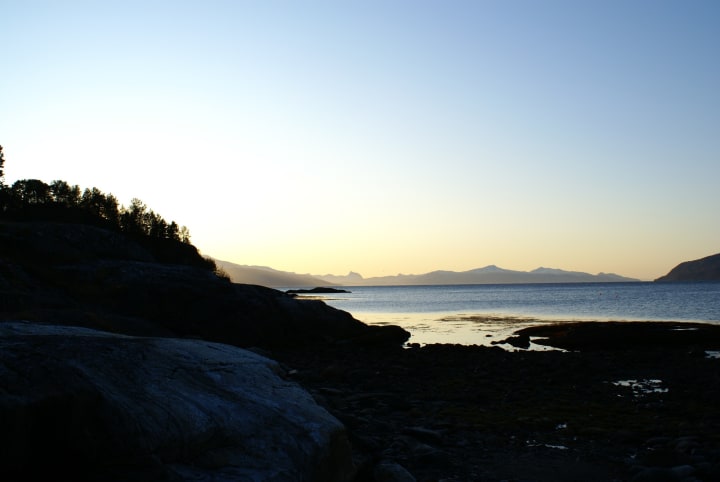
Narvik, Norway. Image: Pixabay
The history of modern Narvik can be traced to the 1870s when the Swedish government began to look for a suitable port from which to export the iron ore that was mined at nearby Kiruna. Norway’s Narvik was selected and the Ofotbanen Railway Line was built from the mines to the port. The main attraction of Narvik’s harbor was that it was ice-free throughout the year as a result of the Gulf Stream weather pattern.
Today, Narvik is a popular destination for snow sports. However, even if you’re not into skiing or boarding, this region delivers the ideal Arctic winter experience.
Our day began with a train journey along the scenic Ofoten Railway, up into the mountains towards Sweden. Trundling through the snowy landscape, skirting the edges of the spectacular fjords, this is one of the most picturesque train journeys that I have experienced, postcard-worthy views in every direction.
Upon reaching our destination we jumped on some snow-mobiles. I felt a little like James Bond as I manoeuvred the sleek machine across the mountain plains, covered with deep, powdery snow. Great fun.
Returning to the train, we descended back down to Narvik only to embark on another journey — this time it was the cable car up Narvik Mountain.
This is a popular area for skiing, but we took the alternative approach and strapped on some snow-shoes to walk down the mountain — under the watchful eye of our guide Kikki. You could do this by yourself but having a guide helps to ensure that not only are you going in the right direction but also that you're getting some local knowledge along the way.
The snow was so deep and fresh that there was a fair bit of sliding involved, but it was a lot of fun and a great way to appreciate the incredible views down over the town of Narvik and out across the fjord and surrounding mountains.
The next day we left Narvik to travel to Gratangen where we visited cabin facility Foldvik Bryggeferie, as well as Nordnorsk Batmuseum (North Norway Boat Museum) which showcases the maritime traditions, fishing and boat history of this part of the world. The main exhibits are from their collection of Nordlandsbatet — the traditional rowing and sailing boats of Northern Norway.
This is a region that has been defined by its relationship with the surrounding water. The Boat Museum is worth a visit for an insight into the lives of the Norwegian fishermen of the past.
If you fancy embarking on an expedition where you get to experience Norwegian fishing first-hand, then there can be no better destination than Foldvik Bryggeferie. Rent a cottage in this fishing village, hire a boat, or head out ice-fishing and you’ll undoubtedly have some incredible fishing stories to share with your friends.
From Gratangen it was a short drive to Polar Park, a special kind of place and definitely worth a visit. There are all sorts of Arctic animals happily living within the park, from the inquisitive bears, to the voracious lynx, to the ambivalent elk.
I really loved meeting the arctic foxes — these small white balls of fluffy fur were quite timid, always keeping an eye out for any predatory eagles that might be circling overhead, but they were prepared to overcome their shyness to come and take some food from your hand.
Without doubt though, the highlight of our visit to Polar Park was our encounter with the wolves. The wolves of Polar Park have been socialised to an extent that you can enter their enclosure. You are accompanied by Polar Park staff, and safety is an absolute priority. Following the safety instructions closely, we knelt down in the snow as the wolves approached and sniffed and licked each of us inquisitively. It was a bit like being sniffed and licked by a very big dog, but somehow completely different — there was a raw, untamed energy to the wolves that was electrifying.
One of the new projects that Polar Park is working on is an accommodation option where you can stay in a cottage within the wolves’ enclosure, watching them howl at the moon as the sky above is filled with the dazzling display of the Northern Lights.
Northern Norway is an extraordinary part of the world, and the harbour town of Narvik is a great point from which to being your Arctic winter adventure.
Where to eat
- Rallar’n Kro restaurant: The Ofotbanen Railway Line was built to connect the mines of Kiruna with the port of Narvik, and Rallar’n Kro restaurant celebrates the importance of this industry and the people who constructed and maintained the railway. With its dark wooden interior, the walls are decorated with photos and artefacts from the early years of Narvik’s development. Offering a relatively simple menu of fish soup or a selection of open sandwiches, this hearty food that showcases the super-fresh local produce. I opted for a sandwich — dark brown bread topped with a mound of tasty shrimp — washed down with local beer Nordlands Bryggeriet. The perfect lunch to refuel before tackling more of the great outdoor activities that this region offers.
Where to stay
- Scandic Hotel: With the combination of endless travelling, too many late nights, and a little too much red wine, by the time we landed at Evenes, and got a mini-bus taxi to Narvik where we were staying, I really wasn’t taking much in. Waking up in the Scandic Hotel Narvik was a really pleasant surprise. The room was simple, stylish, and functional in a very Norwegian way. Neutral tones, minimal furniture, a sleek bathroom. Breakfast was typically Nordic — black coffee, fresh brown bread, salmon, meats, cheese. You couldn't ask for more.
The Military History of Narvik
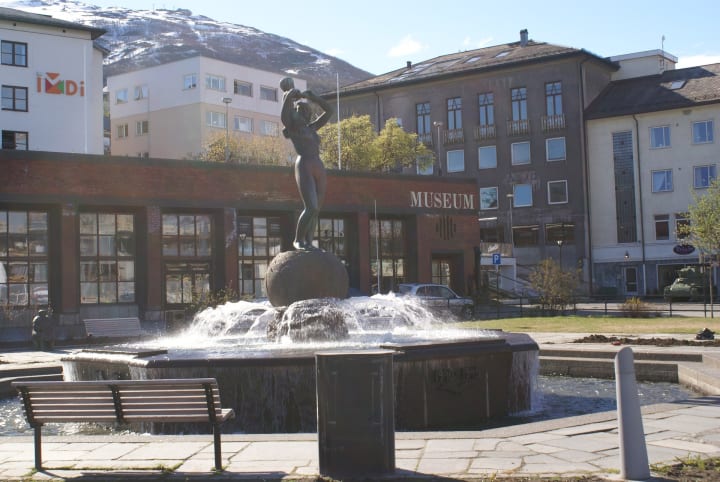
Narvik, Norway. Image: Pixabay
My knowledge of the ins-and-outs of World War II is limited to some of the major milestones, but if you know your history (or if you are from Norway) you'll know that Narvik played a key role during that war.
Narvik’s strategic importance was as the main port for the export of the iron ore that was mined just over the border in Sweden. Both sides wanted control.
In April 1940, ten German warships sailed into Narvik’s Ofotfjorden. The two Norwegian naval vessels defending the harbour were swiftly torpedoed and sunk, with the loss of 282 lives. The German assault had begun.
While the town of Narvik had fallen to the Germans, local volunteers supported by the Norwegian infantry were quickly mobilised to try and contain the occupying forces. Essentially this was pitting inexperienced fishermen and farmers against the elite alpine troops from Austria who were fighting for Nazi Germany.
In May 1940, the Allied Forces attempted to push the Germans out of Norway. British warships, infantry from the French Foreign Legion, and also forces from Poland joined with the Norwegian resistance, engaging the German forces on all sides.
Fighting across the mountainous terrain was hard and difficult. Slowly but surely, from rock to rock, from mountain top to mountain top, the Allied Forces pushed the Germans away from the Norwegian coast and back towards the Swedish border.
Just at the point when the liberation of Norway was in sight, the speedy advance of the German army across the European continent led to a strategic decision by the Allied Forces to withdraw their troops from Norway and redirect their attentions to stopping the Germans’ advance elsewhere.
This left Norway completely exposed and the Germans quickly resumed control of the country and the iron ore that was such a vital component of the Germans’ war effort.
A lot of blood was shed and a lot of lives were destroyed during an intense period of conflict in Norway that achieved only small gains — small gains that were then totally relinquished. Not much makes sense during times of war.
Visiting Narvik military museum, and the surrounding region, is a unique opportunity to get an understanding of what that period of time might have been like for the people of northern Norway and the international contingents of soldiers battling for supremacy and control.
There are numerous monuments and markers that commemorate some of sites of key battles. Places such as Skjomnes, Bjerkvik, Ose, Lapphaugen, and Bardufoss are just some of the locations that saw fierce fighting.
One of the shocking chapters of the German occupation of Norway was the Beisfjord concentration camp. I hadn’t heard about this before, but the museum in Narvik clearly presents the available information and numerous artefacts.
In 1942, to help build their defences and the infrastructure required to export the iron ore from Narvik, the Germans brought in prisoners from the Yugoslav region. These were mainly Serbian and Bosnian men, political prisoners and prisoners-of-war.
There are documented reports of the prisoners being ordered to dig graves and then being lined up so that their bodies would drop into the grave after the guards had shot them. There are further reports that during an outbreak of typhus, ill prisoners were confined to the infirmary barracks. These were then doused with gasoline and set on fire.
Thousands of Yugoslav prisoners lost their lives in Norway during the German occupation.
World War II was a defining period of history for the town of Narvik and the people of northern Norway. Visiting this spectacular region is also an opportunity to remind yourself of the madness of war, and to pay your respects to the people who lost their lives fighting for the future that they believed in.
About the Creator
Gareth Johnson
A non-smoker who loves to laugh... (and binge on travel, food, movies, fashion, and theatre...). Find me on Twitter @gtvlondon


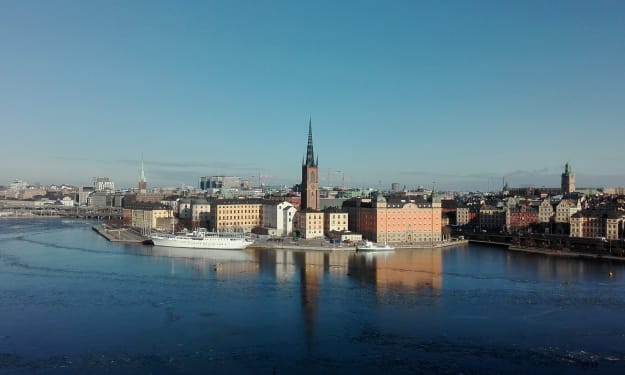

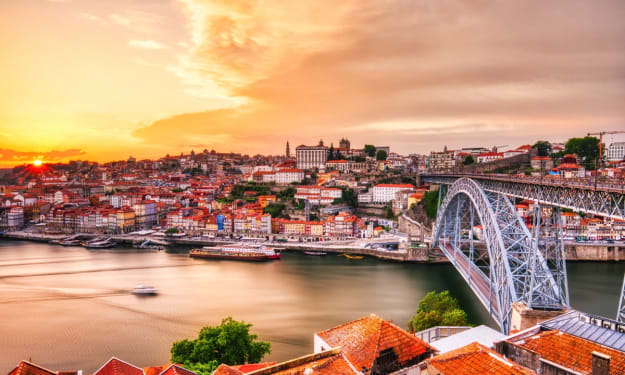

Comments
There are no comments for this story
Be the first to respond and start the conversation.